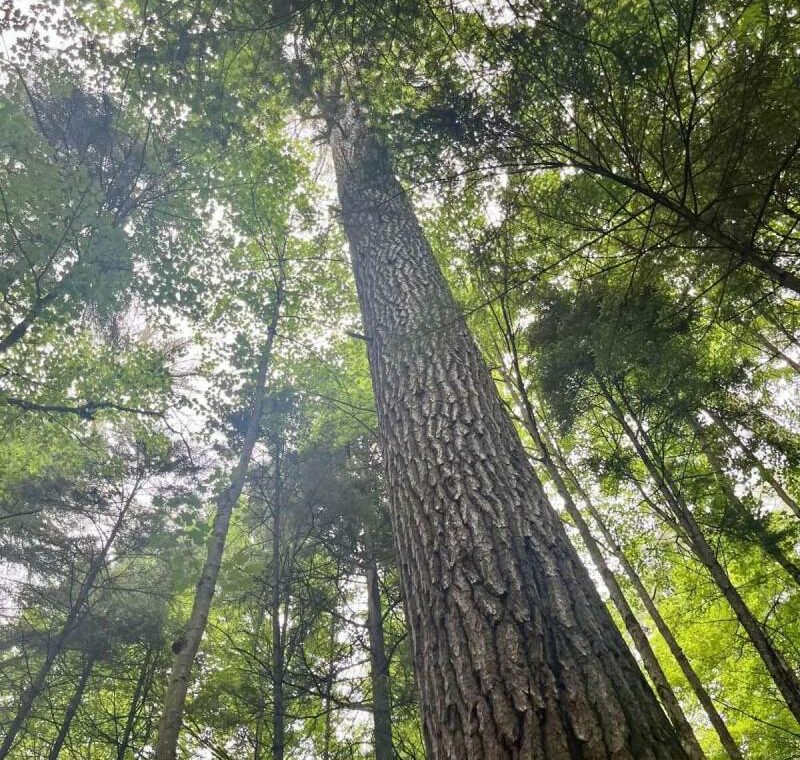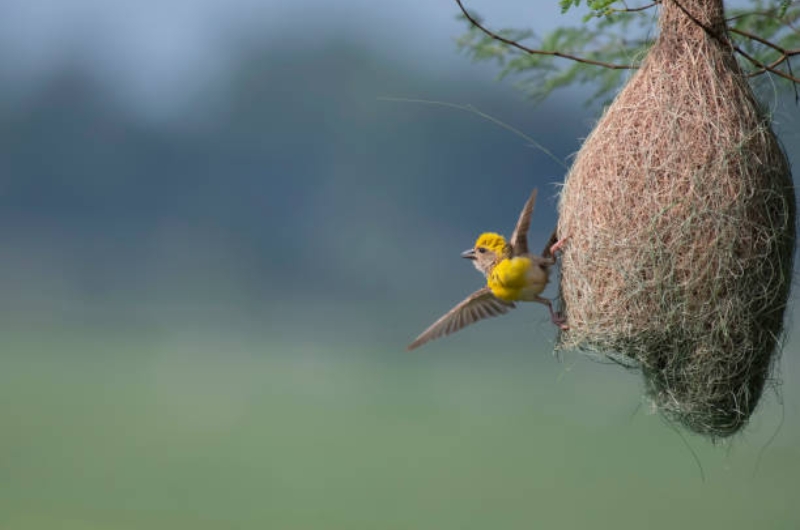Erik Danielson went on a treasure hunt in early July in search of a valuable find. The naturalist constructed a trail through the underbrush and over soft ground and boulders in the Moose River Plains Wild Forest to his most recent find: a giant Eastern white pine that is now thought to be the largest of its kind, with a volume of about 1,450 cubic feet.
According to Danielson, the typical Eastern white pine has a diameter of 32 to 36 inches in southern Canada and along the eastern coast of the United States. With a diameter of 62.6 inches, the tree he discovered and measured in Hamilton County is twice as large. It is not taller than the 174-foot white pine that he discovered last year in a grove near Lake George, which is New York’s highest white pine. But in terms of total mass, the latest discovery outshines it.
The tree is situated in a 550-acre grove with other enormous trees, a two-hour bushwhack from Moose River Road. It was an inconspicuous area to spot the enormous pines, he claimed, because many Adirondack trees were uprooted there during a windstorm in 1950.
“From that, it was kind of just assumed that whatever had been in there was gone,” said 32-year-old Danielson.
After conversing with Matt Kane, an outdoorsman who looked over a study on the region from the early 1900s, Danielson first learnt of the region’s potential.
Danielson discovered that the trees appeared to resemble old growth structures while using a light detection and ranging (LiDAR) technology, but he couldn’t be certain without going. Driving from his house near Jamestown to the Adirondacks verified his concerns. Danielson, a stewardship coordinator with the Western New York Land Conservancy, estimated that the dominating trees in the stand may be older than 300 years.
He found what appeared to be a larger white pine nearby, which stole the crown after finding a potential titleholder.
Danielson use a Native Tree Society technique that uses a monocular, laser, clinometer, and tape to measure the height, girth, and volume of trees. Bob Leverett, a co-founder of the society who has been Danielson’s mentor for about ten years, developed the method.
Massachusetts resident Leverett said mature trees, like the one Danielson measured, can store a significant quantity of carbon dioxide. Tree carbon storage is considered a powerful natural remedy as scientists look for ways to slow down some of the effects of climate change. Until the region or a specific tree is disturbed, the greenhouse gas is kept in the biomass of the forest.
They are significant carbon sinks, not just in terms of the trees above ground but also in terms of the earth and the subsurface, according to Leverett. Consequently, they are storing a lot of carbon.
Leverett estimates that a white pine tree has 52.1% carbon. He claimed that the more biomass, the more carbon it can take in from the atmosphere. According to Danielson, the monster discovered in the Moose River Plains Wild Forest has roughly 35.7 tons of carbon dioxide stored. Based on the exhaust emitted by the typical gasoline-powered passenger vehicle, that is what emerges from the tailpipe of a car that has traveled around 328,989 miles.
It’s impossible to be confident of its title, he said, even though the white pine’s bulk is the greatest Danielson and the tree measuring community are aware of.
The truth is that you can never genuinely claim that this is the biggest white pine—or any species, for that matter—that has ever existed. However, it is a lot bigger than any of the other largest known specimens that are known to exist.
Danielson gathered sufficient knowledge to guide people to hidden riches in New York’s forests after spending more than ten years searching for exceptionally huge trees. He engages in the activity not just for the trees but also for the tranquility of the forest and the plants he comes across.
He stated anybody interested in the hobby to start where he did: by using the Native Tree Society’s tools and online research. He claimed that tree-measuring hobbyists are friendly to visitors.
Since there aren’t many of us doing this kind of work, Danielson remarked, “anyone who shows up, takes an interest in it, and starts doing it will get a lot of encouragement.”
Topics #photography #Pine tree #tree #White pine tree #wildlife









